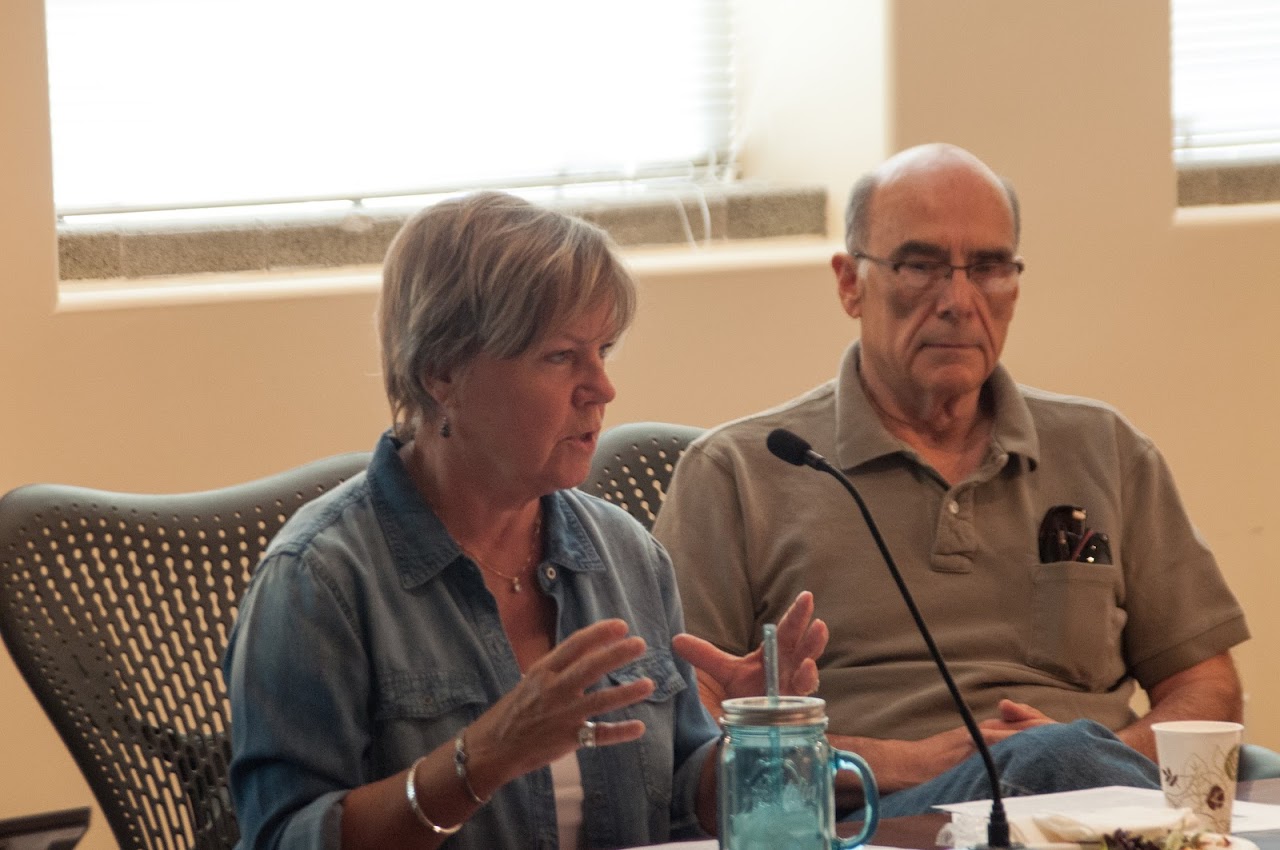A map of Moab’s current boundaries reveals abrupt transitions between the city and county, and the two entities’ zoning designations and development requirements often don’t align.
As a result, the lack of continuity in services, development requirements and ordinance enforcement can cause confusion among current residents and those seeking to develop in and around the city, according to Moab City Council member Kyle Bailey.
“It’s in everyone’s best interest to get on the same page,” he said.
To that end, Moab Community Services Director Amy Weiser recently presented a new map and proposed the creation of an interlocal agreement to govern the city’s response to annexation requests from developers.
The map shows the city’s ideal boundaries, with a tidy yellow line extending from the Colorado River’s north shore, west to the Moab Rim. From there, it runs to the southern end of the Pipe Dream singletrack trail, and east to the Sand Flats Recreation Area boundary.
“We want to look at where we’re getting ready to grow into,” Moab City Manager Rebecca Davidson said during a special joint city and county council meeting on Friday, July 29. “We want to make sure that as anybody tries to annex into the city, we’re prepared with a game plan.”
City annexation of unincorporated areas is governed by Utah state law, as well as local ordinances, and encourages the elimination of “islands” and “peninsulas” that create a discontinuity in city services.
Moab City Council member Heila Ershadi questioned whether creation of an interlocal agreement for annexation is a high-enough priority currently to warrant the commitment of staff resources and time, as the city works on other pressing issues like water treatment and its general plan.
The city has no near-term plans to seek property annexation on its own, Davidson said. However, an annexation plan that the county and the city agree to will allow both entities to provide clear answers and guidance to developers who want to annex their projects into the city, she said.
“Development is happening here now, whether we like it or not,” she said. “What we don’t want to have happen is people coming to us asking to build, and not be ready to tell them what they’re going to be required to do.”
If developers build on land that is not subject to city building requirements, bringing those properties into compliance with city codes when the parcel is annexed into the city will fall on taxpayers. However, when sidewalks, stormwater mitigation projects, street lighting and other improvements are required from the developer as part of the permitting process at the outset of the project, costs are lower and the developer pays for them, Davidson said.
In February 2012, the city annexed just over 470 acres of land extending south down Mill Creek Drive to a 320-acre parcel west of U.S. Highway 191 that is the site of the future Utah State University-Moab campus. The annexation included many residences and businesses, in addition to a large swath of undeveloped School and Institutional Trust Lands Administration (SITLA) land where the 40-acre USU-Moab campus will be built.
“The city’s main push for economic development is the USU campus,” Bailey said. “It brings millions of dollars for infrastructure improvements into the city.”
The SITLA land is zoned to allow commercial “big-box” retail development, which Moab doesn’t necessarily want near town, but which could bring tax revenue into the city for use in other areas of development, Bailey said.
“The development is coming anyway,” he said. “We’d rather have some of it inside the city where we can benefit from it.”
Only two county council members were available for the joint meeting, so no formal motion could be made to accept Weiser’s proposal.
The city and county staff have been working informally to determine how annexation will work for some time, Grand County Community Development Director Zacharia Levine said. Formalizing the process with an interlocal agreement will help clarify roles and expectations, he added.
“This is a regional effort. The county is being very active in addressing residents’ concerns,” Levine said.
In the next few weeks, Levine and his staff will release the Grand County housing plan update. The result of nearly a year of research and data-crunching, the plan will be an important piece of the overall regional development strategy, he said.
Meanwhile, the city will issue a request for proposals in the next few weeks to finalize the long-anticipated final update to the Moab City Master Plan, Davidson said. Public input will be important, and the city hopes to have wide participation in the final process, she said.
City, county hope to formalize updated development requirements
We want to make sure that as anybody tries to annex into the city, we’re prepared with a game plan.




